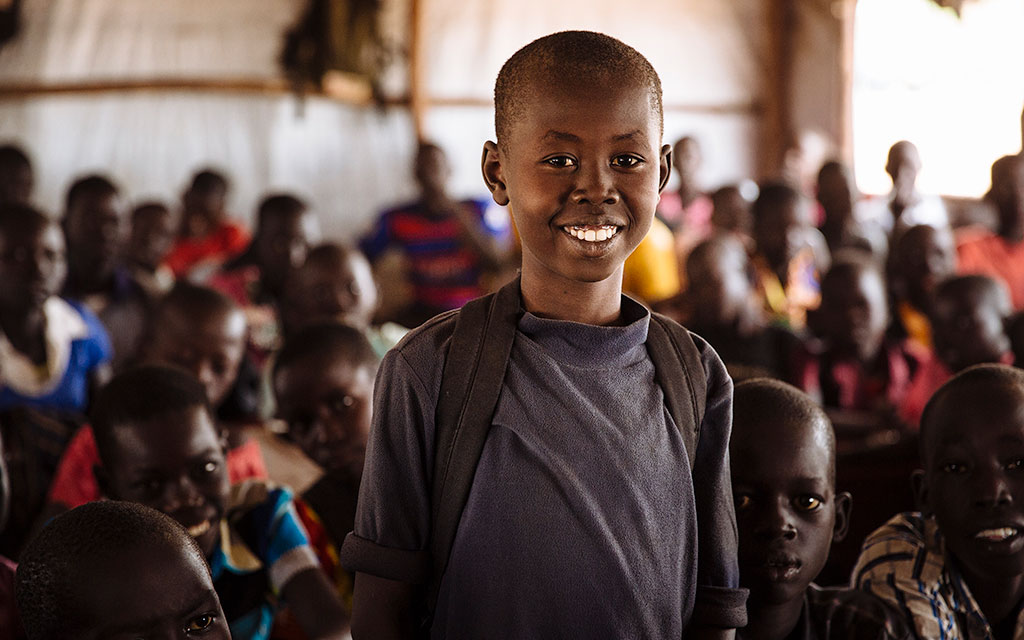South Sudan Emergency
Violence drove Sarah from home—and claimed the lives of her mother and sister.
At 16 years old, she’s living in Nguenyyiel Refugee Camp, Ethiopia—surviving as best she can and bringing up her three siblings on her own.
Photo: ©UNHCR/Oli Cohen
Sarah is one of millions of children whose lives have been torn apart by conflict in South Sudan.
Please help people like her survive.

Shelter

Essential supplies

Livelihoods assistance
What’s happening in South Sudan?
Since December 2013, brutal conflict has claimed thousands of lives and driven over 4 million people from their homes—mostly women and children. Many children are forced to flee alone, after losing their parents.
To add to the hardship, this displacement and ongoing conflict has led to critical food shortages and chronic malnutrition. The ongoing violence has exacerbated this humanitarian catastrophe and is fueling a refugee exodus into neighboring countries.
Where are people from South Sudan fleeing to?
As of 2020, there were more than 2.2 million South Sudanese refugees and asylum seekers within the region. Families have been torn apart, frightened children are on their own, and many are arriving to refugee camps hungry, sick and traumatized by brutality or sexual assault.
Despite hardship and underfunding, refugees from South Sudan are finding shelter and welcome in neighbouring countries including Sudan, Uganda, and Kenya. Uganda has one of the world’s most progressive refugee policies, providing newcomers with plots of lands and the means to become independent, contributing members of their new communities.
What problems do they face when they get there?
Refugees are arriving weak, malnourished and traumatised by what they’ve been through. They have often left everything behind and have no means of survival. The situation becomes even more perilous during the rainy season, late April to November, due to flooding, food shortages and disease.
Why is more public support needed?
UNHCR, the UN Refugee Agency, is on the ground providing support for those forced to flee and working to protect a growing number of internally displaced persons (IDPs) still trapped inside the country. The deepening crisis had led to a critical funding shortage, with only 13% of activities receiving vital international support.
Why is this a ‘children’s crisis’?
63% of refugees from South Sudan are children, and nearly half a million children are out of school as a result of the crisis. These children are missing out on their chance to learn, grow and fulfill their potential through education.
Where can I access the latest reports?
South Sudan Operations—for latest on UNHCR’s relief work to protect displaced people inside South Sudan.
South Sudan Situation Portal —for latest updates on the crisis overall, including UNHCR situation reports, funding requirements and UNHCR’s support for neighbouring countries taking in refugees from South Sudan.
Did you know that over 60% of refugees from South Sudan are children?

When thirteen-year-old John Luis fled South Sudan, he left his home, community and school behind.
Now living in Bidibidi refugee camp, Uganda, John Luis and children like him would be at risk of missing out on their education if it wasn’t for the help of our donors.
UNHCR is supporting a nearby primary school, where John Luis can keep up with his lessons, make friends and feel safe again—just as every child should.
Photo: ©UNHCR/David Azia
Donate Today
Please help South Sudanese refugee families in need.


